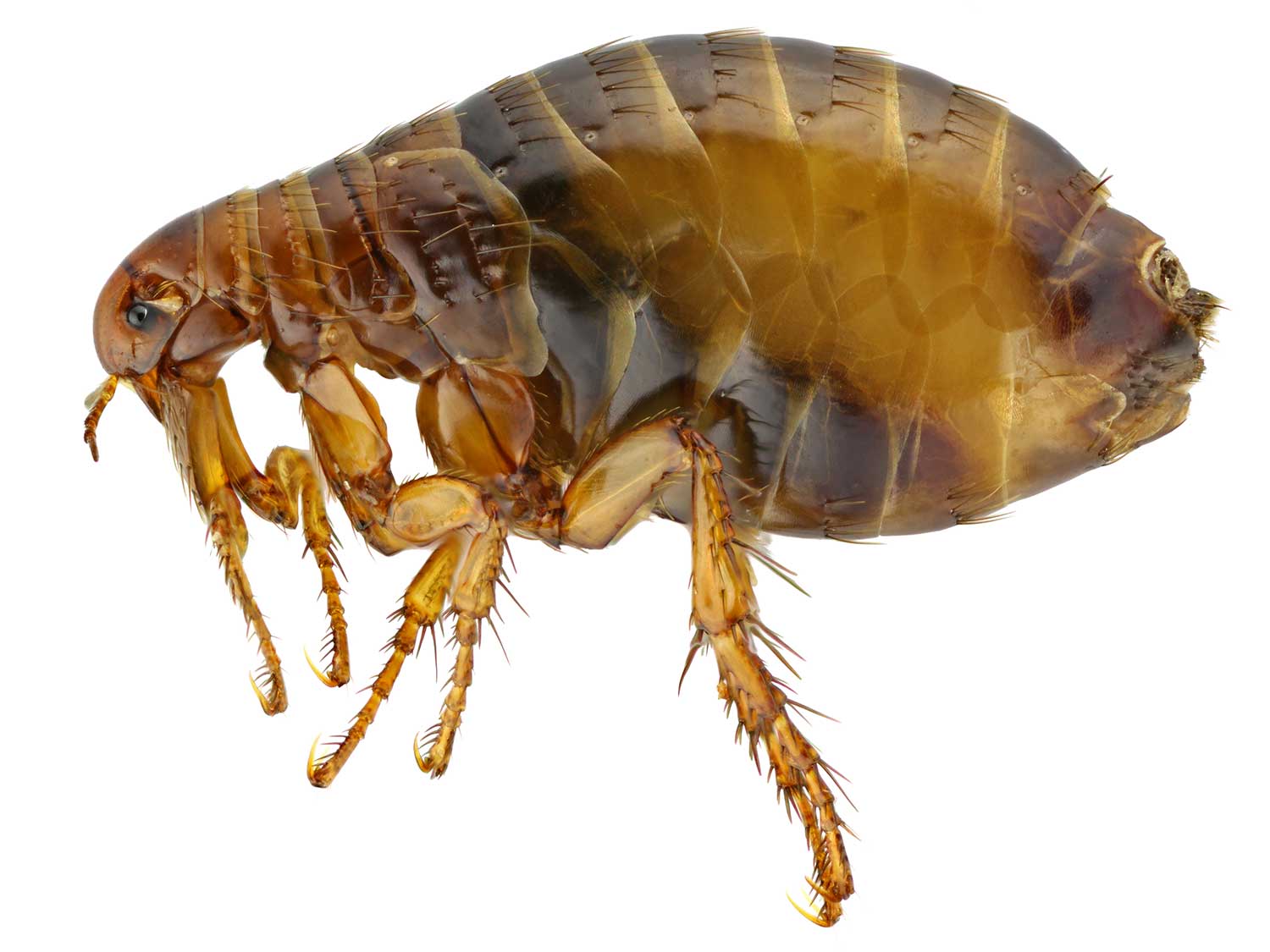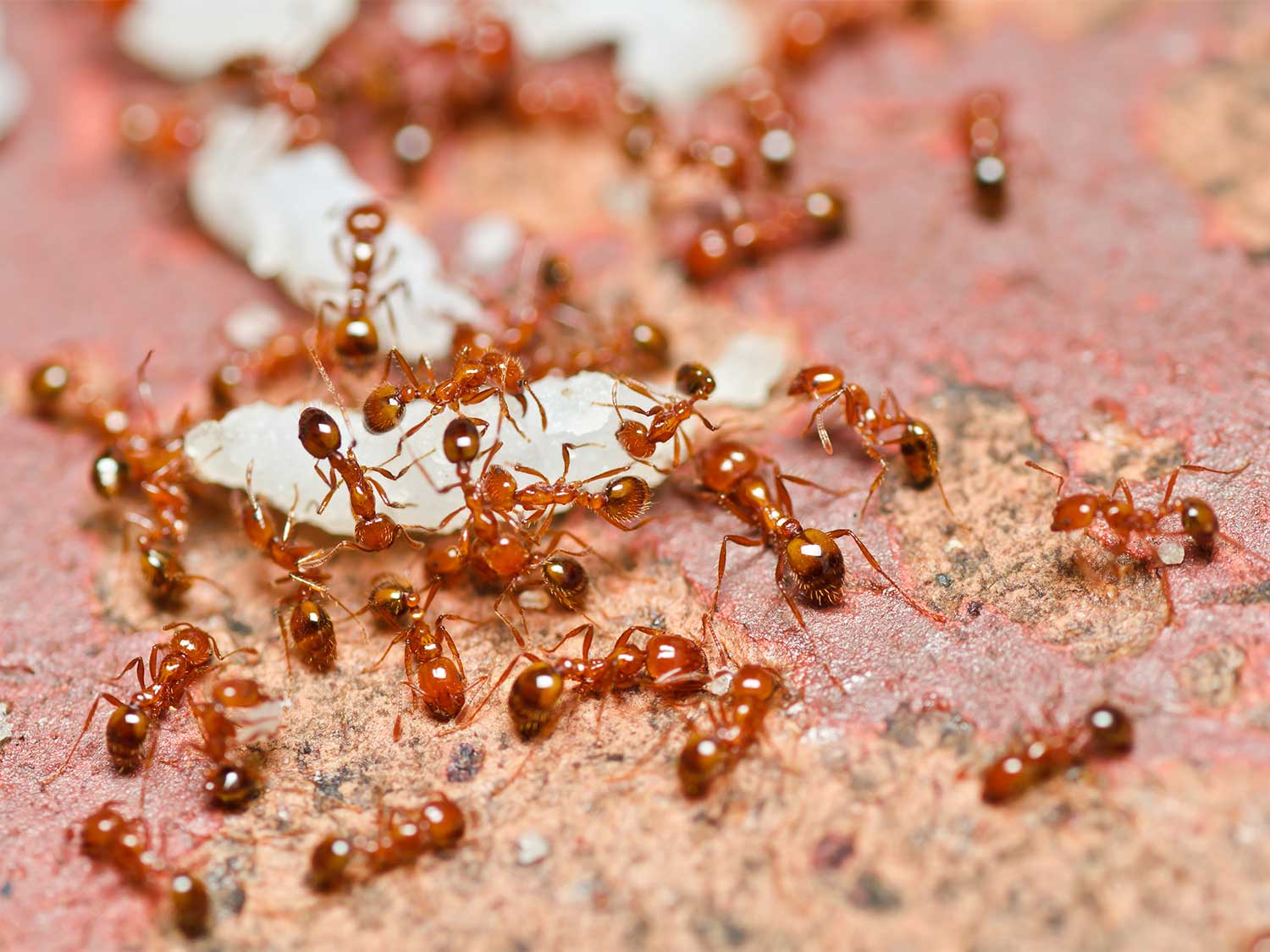
When the news hit the internet, you could almost hear the collective: “awwwwwww, how sweet.” An 80×80-mile swarm of ladybugs, so vast that it showed up on National Weather Service radar, was about to hit the coast of Southern California. Thing is, there are more than 450 kinds of ladybugs in North America, and some aren’t quite as cute as those in children’s stories. Take the Asian lady beetle, for example (speculation is that the SoCal swarm consisted of Asian beetles). Whereas Ladybugs are non-biting, aphid-eating beneficial insects, lady beetles are invasives that bite, are foul-smelling when smashed, and enter your hunting camp and homes by the hundreds every fall. And so it is with the following list of bad bugs. Unlike ticks and mosquitoes, the ones listed here aren’t likely to make you sick or kill you. They are, however, the ones that make our outdoor lives the most miserable.
9. Stink Bugs

Depending on the species, stink bugs might be green, brown, or gray. Like Asian beetles, stink bugs reek when squished. The worst of the worst on the stink bug roster is the brown marmorated variety which was accidentally introduced in the U.S. in the late ’90s. According to the USDA, brown marmorated stink bugs have been found in 44 states and four Canadian provinces. They cause millions of dollars in crop damage and are masters at invading every nook and cranny of hunting camps, recreational vehicles, and campers as they seek winter refuge.
Eradication tactics abound from chemical traps to DIY homebrews, but many of those afflicted prefer to keep the nuclear option on the table.
8. Black Flies

Springtime turkey and bear hunters from New England to Canada know all about the scourge of the black fly. Although some species in Central and South America and Africa can spread disease, the ones in North America are more of the horror-film sort than the life-threatening type. As outdoorsmen know all too well, swarming black flies can torment to the point of near madness. They will attack all patches of exposed skin, and enter unprotected orifices such as nostrils, eyes, open mouths, or ears. Though diminutive in size, black fly bites are capable of raising large welts that itch for days. Although their cycle may last only a month, it is a ferocious month. Warm, sunny, still days in May until mid-June are typically the worst.
Over-the-counter insect repellents that contain DEET, are somewhat effective in repelling black flies. Hunters and anglers prefer Thermacell units, which seem to provide some of the best protection available—except perhaps for a complete body suit comprised of insect netting.
7. Deer (Triangle) Flies

Warm, humid summer days and damp coniferous forests create the ideal conditions for deer or triangle flies. These dive-bombing buzzers are capable of raising tremendous welts on any area of exposed flesh, but are loathed as much for their noisy swarming behavior as they are their bloodthirsty nature. Females bite to get blood for breeding, and when they do, they leave a cross-shaped bite. Then, these vampires lap up the blood. Deer flies are active when it’s warm, they’re attracted to dark colors, and they like wetlands. As we all know, it’s illegal to spray chemicals in wetlands, which is why there are a lot of ’em around marshy areas.
Who the heck knows why they’re called deer flies ’cause they head for humans just as easily as they do livestock. When you’re around a deer fly, you’ll wish you had a tail to swish ’em away, ’cause nothing much else works. Fortunately, they’re the slowest of all biting flies and can be easily swatted. Here are two funny things. First, among the few predators of the deer fly is the wasp, which opens up a whole other can of worms. If you don’t get bit by a deer fly, you might get stung by a wasp. And two, what’s the bird that eats deer flies? The killdeer, that’s what.
6. Love Bugs

So what can possibly be so bad about an insect called the love bug aka. honeymoon fly? Well, here’s one take.
“Love bugs are the spawn of Satan,” says James Hall, the editor of Bassmaster magazine. “In the South, they emerge in the spring and summer for no other reason than to turn your boat’s gel coat into a sticky splattered pile of bug remains while trailering to the ramp. And I’m pretty sure their intestines contain super glue because removal of the leftover chunks sometimes requires a chainsaw. A common method of cleaning a carcass-laden hull or T-Top is scrubbing with moistened dryer sheets. And the sooner you get to scrubbing, the easier the chore.”
Although urban legend claims that love bugs are the result of a University of Florida bio-lab experiment gone wrong, it’s more likely that the first U.S. love bugs were shipboard stowaways in Galveston or New Orleans in the 1920s and migrated to Florida thereafter. Of course, none of that eases the minds of Floridians during lovebug season.
5. Horse Flies

You can tell the difference between horse flies and deer flies by their size, shape, and color. You can really tell the difference between the two once you’ve been bitten. Horse flies, the bane of inshore boat anglers everywhere in North America, range in size from ¾ to 1 ¼ inches long, and usually have clear or solidly colored wings and brightly colored eyes. According to entomologists at the University of Kentucky, they are attracted to movement, shiny surfaces, carbon dioxide, and warmth. According to former Louisiana charter boat captain Devlin Roussel, they are also attracted to legs and ankles which puts them atop his list of the most exasperating of all bothersome bugs.
“Horse flies are prolific and painful biters that are exceptionally adept at hiding under your boat’s gunnels,” says Roussel. “When you decide to get up to run to get away from them, they’ll only pop right back out as soon as you stop to fish again. They’re annoying, and they hurt like hell.”
The most effective repellent for horseflies, according to Roussel, is Avon Skin So Soft. Rarely will you find a boat that fishes the marsh in SE Louisiana that doesn’t have a bottle stashed somewhere.
Read Next: 3 Safe Bugs and How to Eat Them
4. Chiggers

Sci-fi films that show a person’s skin being turned into mush have got to be modeled after a chigger bite. They grab your clothes and wander around until they find some open skin. Once they find it, chiggers use their claws to make tiny holes into which they inject saliva that melts your flesh. Do they die after that? Nope, they feast on that mush which is partially digested tissue. And if that’s not enough, chiggers can stay on a person for as long as a week. First comes an itch, then comes a rash, and lastly come welts or blisters. It can take up to a few weeks to heal, but the bad thing is there isn’t much you can do if you get bit. Wash your clothes in hot water to kill any that are in the fabric. Take a scalding hot shower and wash everywhere, especially your hair, underarms, and groin. All you can do is use hydrocortisone cream to remove the itch and tough it out. Chiggers love warm climates where the temps are in the high 70s through mid-80s and moist. Anywhere there are woods, grasses, and waters you can find chiggers. Keep ’em away by using DEET or bug repellent clothing with permethrin.
3. Fleas

“There’s an old bird dogger joke that ruffles some feathers,” said bird dog writer Tom Keer. “Why is it important to have a pointer in your kennel? To keep the fleas off of your setters.” While that joke lights a fire in bird camp, fleas in a kennel are a problem. Fleas literally are parasites that need blood in order to reproduce. When they get blood, they’ll lay thousands of eggs at one time. They’ll move from one dog through your entire kennel very quickly. They always live in tough to reach spots such as a dogs’ back, tail, neck, and behind the head. In mild cases, dogs bite and scratch the affected areas, but in severe situations, they can scratch an area raw until it bleeds. Not only can fleas distract dogs while training, but the open wounds that come from scratching can cause infections. The bigger problem is that fleas can transmit tapeworms, which is short-handle for a trip to the vet plus medication.
If you see your dog scratching, be sure it has fleas and not just scratching at a scab, burr, tine, mosquito bite, or skin irritation. Use a metal comb to lift up their hair and to look at their skin. If fleas are around, you’ll see them moving. Inspect the comb for others. It’s easier to keep them away with a monthly dose of flea powder, a flea dip, a topical flea/tick dressing or a wash with a flea/tick shampoo. A longer term solution is the commercially available collars that last for several months or more. In the event your dog has fleas, change the hay bedding in their boxes, and thoroughly sanitize the dog runs. If yours is an indoor dog, wash their dog beds, and thoroughly vacuum the house. Concentrate on where they lay down, and get under the baseboards and under furniture. Vacuuming usually removes about half of the fleas, so kill the rest plus any eggs by applying a dusting of flea powder. Vacuum that up, and you should be good to go.”
2. Fire Ants
They’re called fire ants for two simple reasons: one, they’re red and two, their bite makes you feel like you’re on fire. Depending on the subspecies, some spray formic acid onto their prey while others inject an alkaloid venom. All of them start with a bite that also hurts, but the bite is just so they can get close enough to spray and inject the poison. And if you think fire ants can make you hurt really bad, some have it worse. A swarm of fire ants can kill small animals. You usually won’t get bit by one but will get bit by hundreds. Their red welts look like a teenage kid with acne; the only difference is a fire ant welt itches like heck. Rinse off the area with a 50-50 mixture of bleach and water or apply some hydrocortisone cream.
Get this: fire ants can survive floods. They don’t drown because they clump together and form a raft made up of tens of thousands of fire ants. They’ll live anywhere, around rivers and streams, lakes and ponds, and in the woods and fields. They’re sneaky mothers, and will usually set up hidden, underground lairs around deadfall trees, near rock piles, or tree stumps. If there is no cover, then they’ll build mounds in open fields.
1. Stinging Caterpillars

You probably remember caterpillars from 7th-grade biology class. Your teachers showed you that ugly caterpillars can transform into beautiful butterflies. While that’s true, there is nothing cute about the stinging version. Those soft, fuzzy whiskers conceal tines that contain venom. When they brush against your skin, the tines stick into your skin, and you’re screwed. The way to avoid getting stung is to stay away when you see them. But in the event that one drops down your t-shirt or climbs on your leg while you’re sitting down having a drink, here’s what you can do: remove the tines by placing a piece of Scotch tape over the bite and rip it off your skin. You probably won’t have tape if you’re in the woods, so use the sticky part of a band-aid or a piece of duct tape which you probably have. If you have baking soda and water, make a paste and apply. If not, anti-itch cream will do. The best way to keep from getting bit is to roll down your shirt sleeves and avoid them at all cost.
It wouldn’t be a day in the woods without a bite or two. While some of these might put a cramp in your day, they aren’t bad in the scope of injuries in the woods. If they’re too much for you, then you can always stay indoors with the air conditioner running and watch TV. But where is the fun in that?






